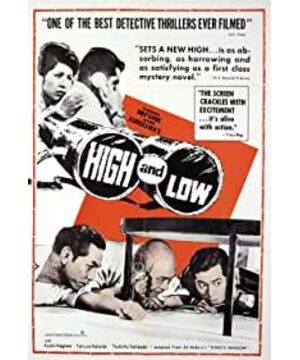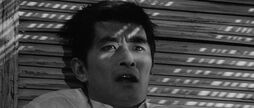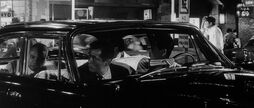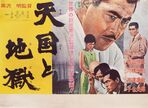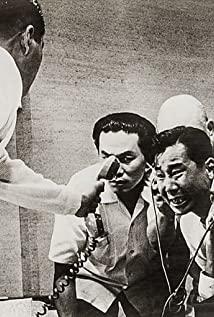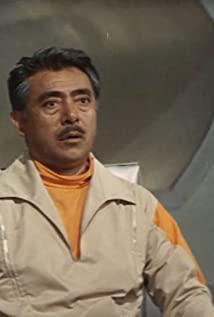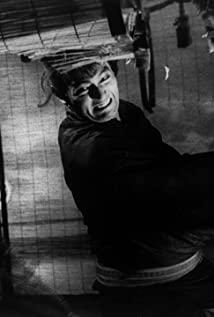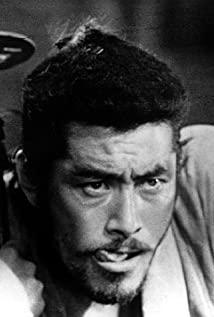The audience will discover the central theme of Kurosawa Akira's film from the English title of the film "High and Low". In the opening shots of the film, the big overhead shot shows the urban landscape of Yokohama City, where it has experienced earthquakes, wars, two destructions and reconstructions, so Akira Kurosawa chose this as the place where the story took place was not unintentional. Japan has gradually begun to recover its economy in the 1960s, bidding farewell to the sorrow and depression of wartime life, but the improvement of the economy cannot solve many internal contradictions in the society. Kurosawa began to shoot a series of social problem films in the 1960s, echoing the early "Wild Dogs" and "Drunken Angels". After the opening captions, we immediately went to the house of Quan Teng, the executive officer of a shoe company. This villa is completely decorated in Western style, luxurious and elegant, and equipped with modern electrical equipment (air conditioning was still an extremely rare item in Japanese society at the time). A low-angle overhead shot. A close-up of Mifune Toshiro, who plays Gondo. He is in a business game with the company’s directors. Other directors are demanding lower product quality and cost reduction, but Gondo opposes this, and he is squeezed out. The danger of the company, he must raise money to control more shares. In this scene, Quan Teng came to the floor-to-ceiling window of the living room and opened the glass door. At this moment, we found that the scenery that appeared at the beginning of the film was a subjective shot taken from this angle. The contrast between "high" and "low" is thus clear.
In Kurosawa's later works, adaptations of literary works have become the mainstream, and these works are almost all Western. For example, "Chaos" and "Spider's Nest" are adapted from Shakespeare's plays, and this "Heaven and Hell" is also adapted from a detective novel by Ed McBain. Almost all of the hour-long plot of the first part of the movie takes place in the living room of Quan Teng's house. Here, Kurosawa showed his extremely clever scene management skills, and the first part is also the place where the original novel fits the most. The second half of the film is almost all created by Kurosawa himself. At this critical moment, Quan Teng received a call telling him that his son had been kidnapped and demanded a ransom of 30 million. But Quanto’s son soon appeared. It turned out that the kidnappers had mistakenly identified the wrong person and caught Shinichi who was the son of the driver who was playing with Quando’s son. This brought the movie plot into a scene full of suspense and moral struggle. Several important groups of characters appearing in the first part are: Gondo, the driver, Gondo’s wife, assistants, and the policeman played by Nakadai Tatsuya. Kurosawa often places the driver on the edge of the camera. He is often shrouded in dark shadows, bows his head without saying a word, anxious and helpless, but Quandou occupies the core position of the camera. He is the master of the situation, and his decision is about The fate of the child. Kwonto's wife (worn in a traditional Japanese kimono in a modern house) advocated saving Shinichi with money immediately. Kwonto was reluctant to give up the money, so he lost his position in the company. Table lamps, doors, and sofas have become symbolic props, and they often appear between characters to symbolize the gap between each other. Kurosawa used two cameras to shoot this part, one fixed on a push rail on the ground, and one set in mid-air. Kurosawa likes to show a scene from different angles to imply the viewing angles of people of different status, so we see both Gondo looking up and Gondo looking down. Numerous characters also gave Kurosawa the opportunity to show his good depth photography. He constantly uses deep-focus photography to capture the simultaneous action on the three levels of foreground, middle ground and background. The distance is usually expressed through obstacles. For example, there is a scene in the film: the detective in the foreground is analyzing the phone recordings, the detective in the middle shot is counting the banknotes, and in the background, Quan Teng, who decides to give up his wealth, is plunged into darkness. The difference between Kurosawa's depth of field and other directors is that he rarely deliberately creates an out-of-focus effect, and any group of characters (actions) are clearly presented.
Let's look at the creative theme of this paragraph again. Kwonto was initially the object of Kurosawa's criticism. Behind the rapid development of the capitalist economy, it was accompanied by hypocrisy and deceit. Kurosawa is saddened by the disappearance of traditional Japanese culture, and Gondo's final decision is the victory of Kurosawa's traditional morality. The protagonists in Kurosawa's films are often men who restrain their selfish desires and work for the benefit of others. This is reflected in everything from "The Seven Samurai" to "The Desire of Life". So Kwonto was given the same mission by Akira Kurosawa. Another theme is the imagery representation of heaven and hell. In the kidnapper’s phone call, he claimed that he could see Gondo’s home and asked Gondo to open the curtains. This is a direct contest between heaven and hell. The rich Gondo became an angel, while the poor kidnappers became an incarnation. For the devil. Kurosawa's humanitarian ideals are expressed to the utmost extent in "Heaven and Hell". Akira Kurosawa, who originally believed in Marxism, no longer showed relevant tendencies in his works in the later period, but the class issue is still implicit in the narrative. The class problem in "Seven Samurai" appears between the ronin and the peasants, while the "Heaven and Hell" is about the rich and the poor. Kurosawa did not give sympathy to the poor. They all appear as criminals here. Perhaps in Kurosawa's view, the moral stance is the standard that determines class, not the amount of wealth. At that time, the economic development in Japanese society also brought about a sharp rise in crime rates. At this time, Japan was considering revising the criminal law to increase penalties for kidnappers. Kurosawa keenly grasped this social hot spot and filmed the book. piece. In the film, the police detectives also felt that the punishment for kidnapping was not strong enough, and "tempted" Takeuchi to kill, so that the death penalty could be imposed.
After the first stage, there is a wonderful action scene with ransom. No one is better at taking pictures of people in action than Akira Kurosawa, and the kidnappers demanded that Kwonto throw money on the train. The movement of the train and the movement of the characters coordinated with each other. From the background of the depth of field, the characters that are constantly forward are too far away from the camera. It's near, even through the camera. Kurosawa allows the camera to follow the action of the character instead of decomposing the action, so we see the smooth movement, which is a presentation of the dual realism of time and space.
At this point, the first part "Heaven" of "Heaven and Hell" is over, and the second part is "Hell". The first shot at the beginning was the smelly pond. The prisoner Takeuchi walked past and his reflection appeared in the dirty pool water. This kind of expression also appeared in Kurosawa Akira's early work "The Drunken Angel". Following Takeuchi to his dilapidated small room, he opened the window and saw the Gondo house on the top of the mountain (the subjective lens opposite to the first part). For Takeuchi, before the last scene of the film, he did not have a line, and he was completely a cold criminal. Regarding the criminal motives of this intern, Akira Kurosawa did not explain too much. He originally had a good career prospect, but it may be that Akira Kurosawa noticed that economic development has made people's desires greater, and greed makes it possible for anyone to commit crimes. Roads (comparison of the air conditioner at Gonto’s house and the fans and fans in the police station). Kurosawa focused this part of the processing on the details of the police detectives solving the case, so that this part of the film is more like a police detective movie. In Jules Dassin's "The City That Never Sleeps", we first saw this subject matter. It can be said to be a branch of film noir, which shows the interaction between the detective who represents the conscience and the evil environment. So this part has some kind of film noir connotation.
Akira Kurosawa performed the process of analyzing clues by the police in no detail. Akira Kurosawa took ten minutes to film the police meeting. At the meeting, the police explained the clues they had (many of which were already known to the audience in advance). This kind of bloated plot seems that only Akira Kurosawa can shoot it with relish (another example is the plot prepared before the war in "Seven Samurai"). A series of discoveries and coincidences finally helped the police get close to the murderer. At this time, the image of Yokohama's city once again became the protagonist. As an important base stationed by the United States after the war, the city is facing an unprecedented and powerful invasion of American culture. In the exciting scene at the end of the film, Takeuchi is wearing sunglasses (multiple identities) and carnations (a kind of contrast) ) Walking in the night of Yokohama, crowded people wrapped in neon on both sides, posters of American jazz singers appearing from time to time, American soldiers everywhere in the bar, in the social atmosphere of money worship and treacherousness, they are already unemployed at this time Kwonto appears, and Kurosawa once again lets Mifune go through a dark situation, just like the demobilized criminals in "Wild Dogs" and the underworld in "Drunken Angels". Takeuchi found him and borrowed a fire from him to light a cigarette. This was the only time that two protagonists of different "classes" faced each other directly. The last meeting was through the prison glass. The people Takeuchi used were those who were addicted to heroin. They curled up in the dark alleys to beg. Takeuchi used a woman to do an experiment in order to use drugs to kill two accomplices who mistakenly thought he had betrayed him. Kurosawa's criticism of the bottom can be said to be merciless. He did not give drug addicts a panoramic shot to show how pitiful they are, but used a middle shot to show their hideous faces after being tortured by drug addiction. Desire is a drug, making people a slave to money. This is Kurosawa's humanitarianism, rooted in Japan's traditional moral values, and with a distinct color of Western modernism. However, judging from the soundtrack of this section of the film, from jazz to rock, to "My Sun" at the time of Takeuchi's arrest, Kurosawa hints at the reality that Japanese traditional morality is gradually being eroded by Western culture.
The scene of the prison meeting at the end is very similar to the climax scene in Wenders' "Paris, Texas". The two of them are separated by glass, and the other's heads are superimposed on the glass. In fact, they are similar to each other. The years of war, defeat and occupation have left an indelible mark on those who witnessed it. No matter how wealthy the country later became, these remaining memories have become their lingering shadows. In this shadow , Kwonto and Takeuchi, they saw each other, the self who had been lost in confusion, pessimism, and resentment.
View more about High and Low reviews


